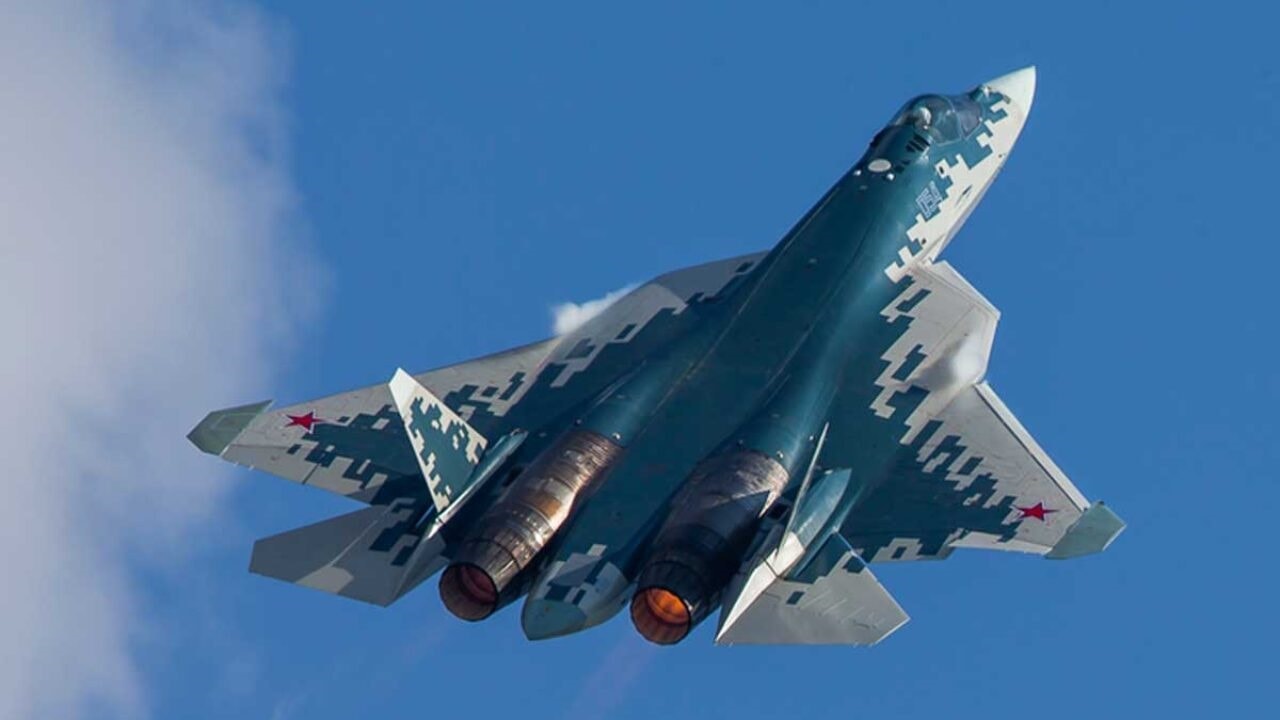Where is the Russian Air Force? On day 117 of the Russian invasion of Ukraine, the Russian military is still looking for a breakthrough in eastern Ukraine. The fighting in and around Severodonetsk continues unabated, but the Russian forces have made little progress over the past few days.
Despite logistical and force generation issues, the Ukrainian forces are still putting up a fierce defense.
Russian Aerospace Forces Over Ukraine
In its daily estimate of the war, the British Ministry of Defense focused on the Russian Aerospace Forces and their lackluster performance in Ukraine.
In the initial days and weeks of the war, the absence of the Russian air force over the skies in Ukraine was one of the major mysteries of the war. Despite boasting a numerical and technological superiority, the Russian Aerospace Forces were simply absent, conducting mainly airstrikes with standoff munitions from great distances.
“Russian ground and tactical air operations have remained focussed [sic] on the central Donbas sector over the weekend. In the conflict to date, Russia’s air force has underperformed. Its failure to consistently deliver air power is likely one of the most important factors behind Russia’s very limited campaign success,” the British Military Intelligence assessed.
Fast forward 117 days into the conflict, and we now know that the Ukrainian air defenses have been one of the major reasons that Russian aircraft aren’t flying at will. Bolstered by timely and accurate intelligence-sharing by the U.S. and other Western intelligence services, the Ukrainians have been able to largely protect their long-range anti-aircraft systems and still use them almost four months into the war. Russian combat sorties, thus, face multiple threats.
At higher altitudes, Russian pilots have to deal with the Ukrainian S-200 and S-300 anti-aircraft systems, while below 10,000 feet, they have to look out for a sea of man-portable air defense systems (MANPAD) that the Ukrainian troops are using. These shoulder-fired anti-aircraft weapons—such as the FIM-92 Stinger missile the U.S. has given the Ukrainians—are particularly deadly and prevent Russian aircraft from operating freely.
“It cannot gain full air superiority and has operated in a risk-adverse style, rarely penetrating deep behind Ukrainian lines. Some of the underlying causes of its difficulties echo those of Russian Ground Forces,” the British Ministry of Defense added.
But another reason behind the poor performance of the Russian air forces over the Ukrainian skies has to do with its poor training before the war. The fighting thus far has shown the Russian Aerospace Forces doesn’t have the ability to conduct large-scale operations over contested airspace. It’s one thing to deploy a few pairs of aircraft at the same time and a completely different from having dozens if not hundreds of aircraft of all types conducting combat operations at the same time over contested airspace. The U.S. military and NATO has the capability to do the latter and has proven it during wartime (First Gulf War, for example). But this capability wasn’t suddenly there but had to be developed and honed through joint exercises.
“For years, much of Russia’s air combat training has highly likely been heavily scripted and designed to impress senior officials, rather than to develop dynamic initiative amongst aircrews,” the British Military Intelligence said.
“While Russia has an impressive roster of relatively modern and capable combat jets, the air force has also almost certainly failed to develop the institutional culture and skill-sets required for its personnel to meet Russia’s aspiration of delivering a more Western-style modern air campaign. This has led to a greater than planned weight of effort falling to ground troops, who are becoming exhausted; and on advanced cruise missiles, stocks of which are likely running low,” the British Ministry of Defense added.
Russian Casualties
Russian Casualties The Ukrainian Ministry of Defense claimed that as of Monday, Ukrainian forces have killed approximately 33,800 Russian troops (and wounded approximately thrice that number), destroyed 216 fighter, attack, and transport jets, 181 attack and transport helicopters, 1,477 tanks, 749 artillery pieces, 3,588 armored personnel carriers, 238 Multiple Launch Rocket Systems (MLRS), 14 boats and cutters, 2,527 vehicles and fuel tanks, 98 anti-aircraft batteries, 601 tactical unmanned aerial systems, 55 special equipment platforms, such as bridging vehicles, and four mobile Iskander ballistic missile systems, and 130 cruise missiles shot down by the Ukrainian air defenses.
1945’s New Defense and National Security Columnist, Stavros Atlamazoglou is a seasoned defense journalist specializing in special operations, a Hellenic Army veteran (national service with the 575th Marine Battalion and Army HQ), and a Johns Hopkins University graduate. His work has been featured in Business Insider, Sandboxx, and SOFREP.

